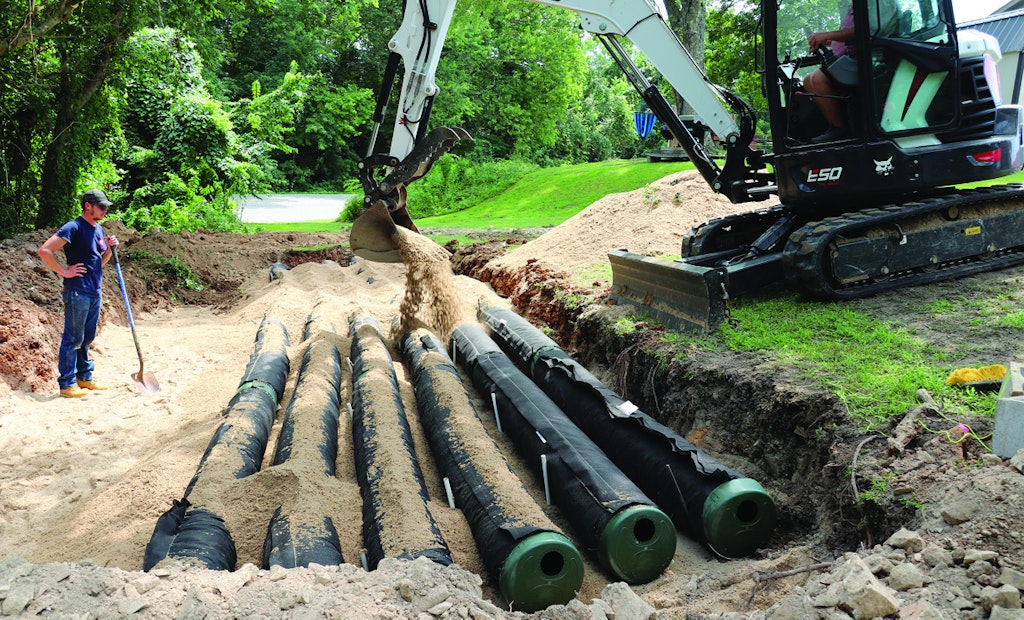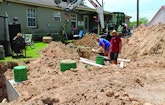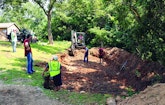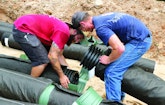
Kevin Phipps, left, stands ready to distribute sand among the AES pipes while Brook Cannedy, in the mini-excavator, adds more sand for the dispersal bed at a day care center in Garfield, Arkansas. (Photos courtesy of BBB Septic and Portable Toilets)
When the day care center in Garfield, Arkansas, ran out of onsite options, it was actually a good thing. Piper Satterfield, septic system design specialist at BBB Septic and Portable Toilets in Bentonville, Arkansas, summarized the backstory:
The day care owner, licensed by the...










